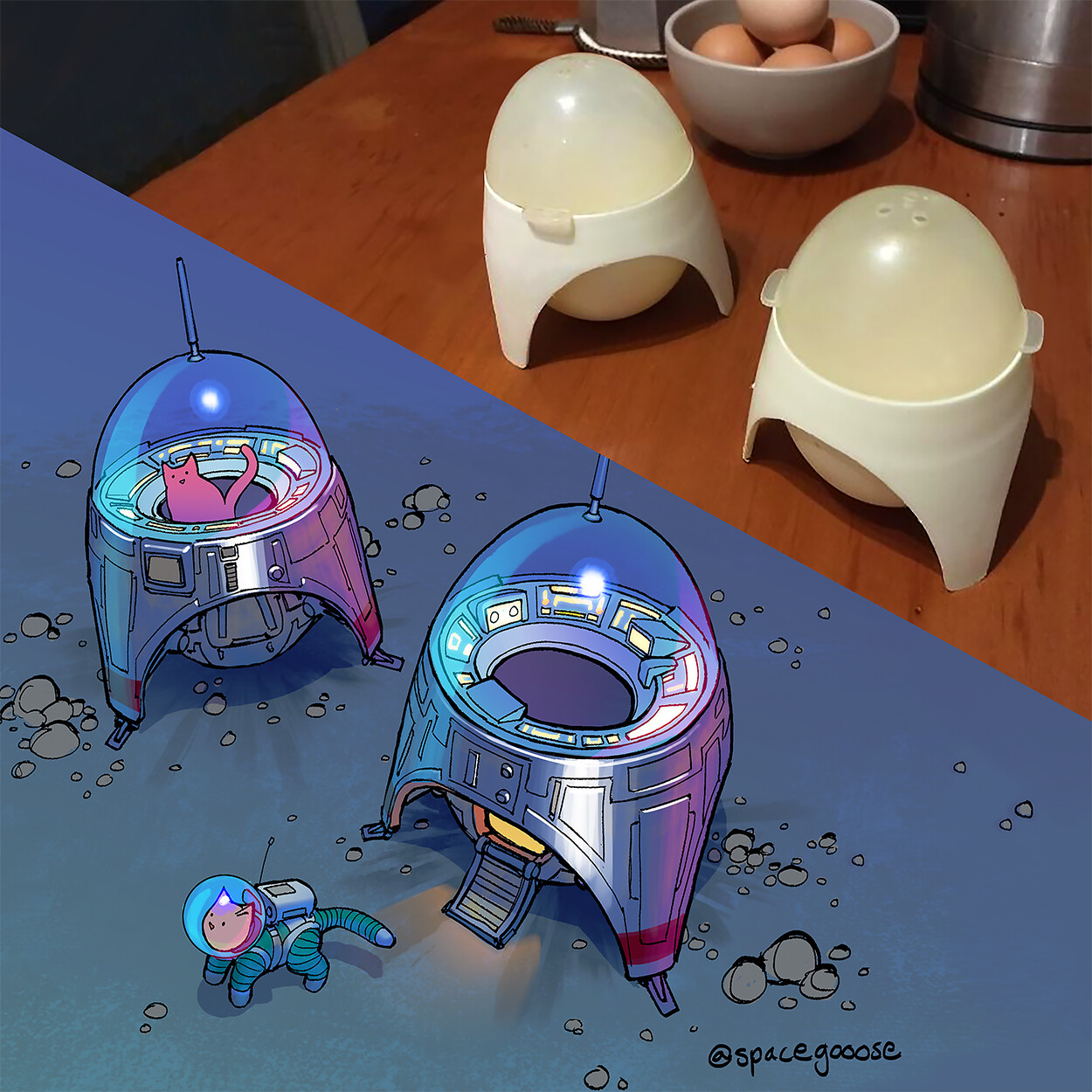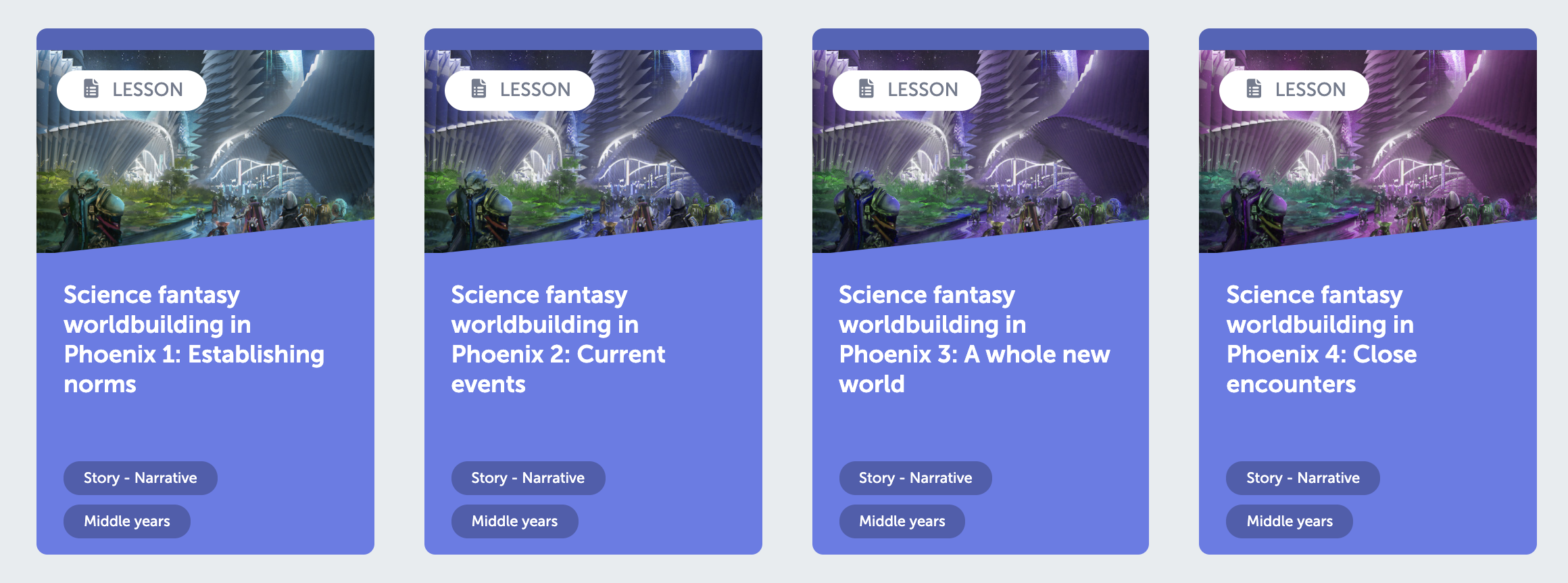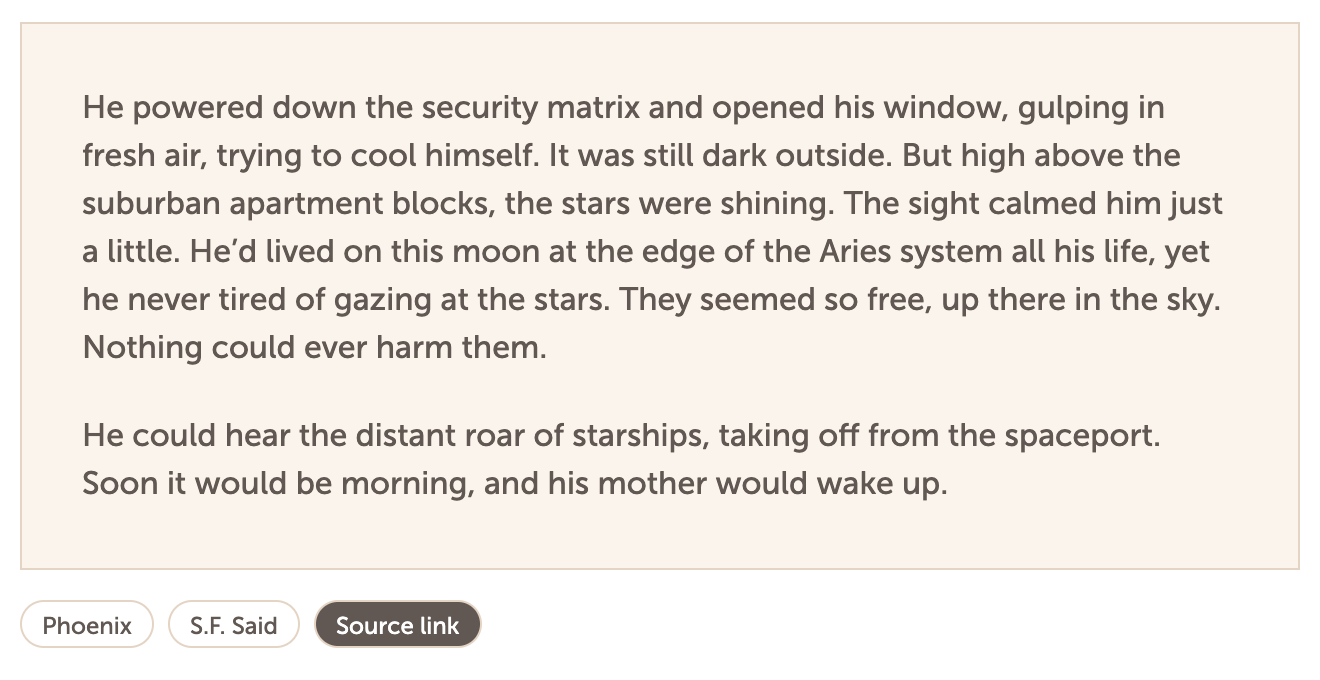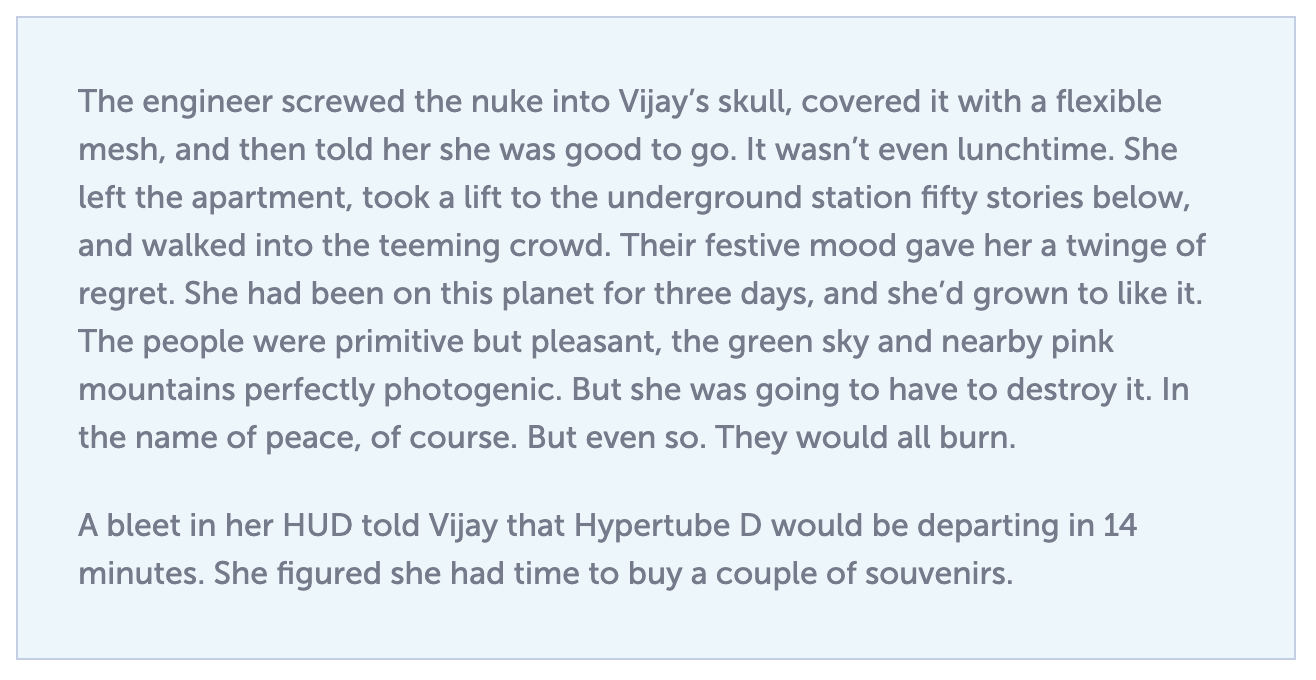From H.G. Wells to N.K. Jemisin, Star Trek to Star Wars, science fantasy is an enormously popular genre: all the action, adventure and high-stakes drama of fantasy in a futuristic, science-ish wrapper.
In the Science fantasy worldbuilding in Phoenix course we sample some of the most tropey moments from British author S.F. Said’s popular space fantasy of the same name, including encountering an alien, visiting a new planet, fighting a battle, and facing a cosmic menace.
Lessons in this course:
- Establishing norms
- Current events
- A whole new world
- Close encounters
- Exotic technology
- Lasers, camera, action!
- Cosmic threats
What narrative features do we cover?
This course focuses on descriptive writing (with a little action).
One of the key features of this genre is just how relatable everything is. Whether an alien intelligence, a new planet, or a magical piece of technology: story elements are at once startlingly exotic and reassuringly familiar.
In fact, one of the easiest ways to build a science fantasy world is to take everyday experiences and exaggerate one or more qualities until they become fantastic, and then have characters in story react with appropriate amazement.
So in this course we see an ordinary crab transformed into giant desert predator, a cable car in a strong wind turned into a cloud-mining installation on a nightmarish gas giant, among many other fantastic transmutations.

Concept art with egg cups: Space Goose via ArtStation
Who is this course for?
This course is designed for middle years students of all abilities.
Phoenix is an entertaining and accessible text for middle years readers. The lessons are also accessible, focusing on the building blocks of description—detail, expansion, reaction—while exploring the colourful tropes of the science fantasy genre.
That said, our worked examples provide a range of responses, from cartoonish to serious, so there may be scope for older students who have a particular enthusiasm for this type of story.
Example snippet (from Lesson 1: Establishing norms)
Example model response
Overall
This course is a great introduction for struggling readers and writers to the powers of descriptive writing. Phoenix uses simple language and patterns, so students can enjoy creating wild worlds by putting a twist on their everyday experiences.
Header image credit: Marina Ortega via ArtStation
Card image credit: Leon Tukker via ArtStation




